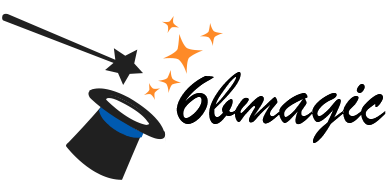Your position: Home / 2024 New arrivals
Imagine:
The magician introduces a deck of cards; he spreads it face up to show that all the cards are different. Next, he places the deck on the table in front of a spectator. He says: "In a moment I am going to turn my back to you, and while I am turned away, I want you to make a free selection of any card. Simply cut off any amount of cards and look at the bottom card of the cut-off portion. Then, bury the cut-off portion somewhere into the middle of the remaining cards in order to lose your selected card. Once that is done, invite me to turn back around to face you."
So the magician turns away from the spectator and they carry out the aforementioned instructions, after which they invite the magician to turn back around to face them. The magician turns back around and recaps what happened. He emphasizes the fact that they could have selected any card from the deck and that the card is now lost somewhere in the deck. He then invites them to thoroughly shuffle the deck in any way of their choosing in order to further lose the selected card. They do that.
After the shuffling, the magician takes the deck from the spectator (the first time that he's touching any of the cards since the beginning) and he immediately - without looking at the faces or the backs of any of the cards - takes the deck behind his back. He tells the spectator that he's going to locate their selected card under challenge conditions: without being able to see anything.
The magician then, from behind his back, brings forward the deck in a face-down position with one card sticking out of it. He hands that card to the spectator, asks them to name their selected card for the first time, and then invites them to flip the card over ... and it is none other than their selected card. (The rest of the cards could be examined if desired.)
Some important conditions of note:
The spectator has a completely free choice of any card in the deck; so they can cut the deck anywhere they want to. They aren't forced to cut to some particular card via any crimped cards or long / short cards.
The magician only touches the deck for the first time (since the beginning) after the spectator is finished shuffling it. And after touching the deck, he immediately takes it behind his back.
At the end of the effect, if the spectator wants, they can thoroughly examine the deck. In fact, they can even keep the deck.
1st edition 2023, PDF 9 pages.
word count: 2836 which is equivalent to 11 standard pages of text
The magician introduces a deck of cards; he spreads it face up to show that all the cards are different. Next, he places the deck on the table in front of a spectator. He says: "In a moment I am going to turn my back to you, and while I am turned away, I want you to make a free selection of any card. Simply cut off any amount of cards and look at the bottom card of the cut-off portion. Then, bury the cut-off portion somewhere into the middle of the remaining cards in order to lose your selected card. Once that is done, invite me to turn back around to face you."
So the magician turns away from the spectator and they carry out the aforementioned instructions, after which they invite the magician to turn back around to face them. The magician turns back around and recaps what happened. He emphasizes the fact that they could have selected any card from the deck and that the card is now lost somewhere in the deck. He then invites them to thoroughly shuffle the deck in any way of their choosing in order to further lose the selected card. They do that.
After the shuffling, the magician takes the deck from the spectator (the first time that he's touching any of the cards since the beginning) and he immediately - without looking at the faces or the backs of any of the cards - takes the deck behind his back. He tells the spectator that he's going to locate their selected card under challenge conditions: without being able to see anything.
The magician then, from behind his back, brings forward the deck in a face-down position with one card sticking out of it. He hands that card to the spectator, asks them to name their selected card for the first time, and then invites them to flip the card over ... and it is none other than their selected card. (The rest of the cards could be examined if desired.)
Some important conditions of note:
The spectator has a completely free choice of any card in the deck; so they can cut the deck anywhere they want to. They aren't forced to cut to some particular card via any crimped cards or long / short cards.
The magician only touches the deck for the first time (since the beginning) after the spectator is finished shuffling it. And after touching the deck, he immediately takes it behind his back.
At the end of the effect, if the spectator wants, they can thoroughly examine the deck. In fact, they can even keep the deck.
1st edition 2023, PDF 9 pages.
word count: 2836 which is equivalent to 11 standard pages of text
 USD
USD



